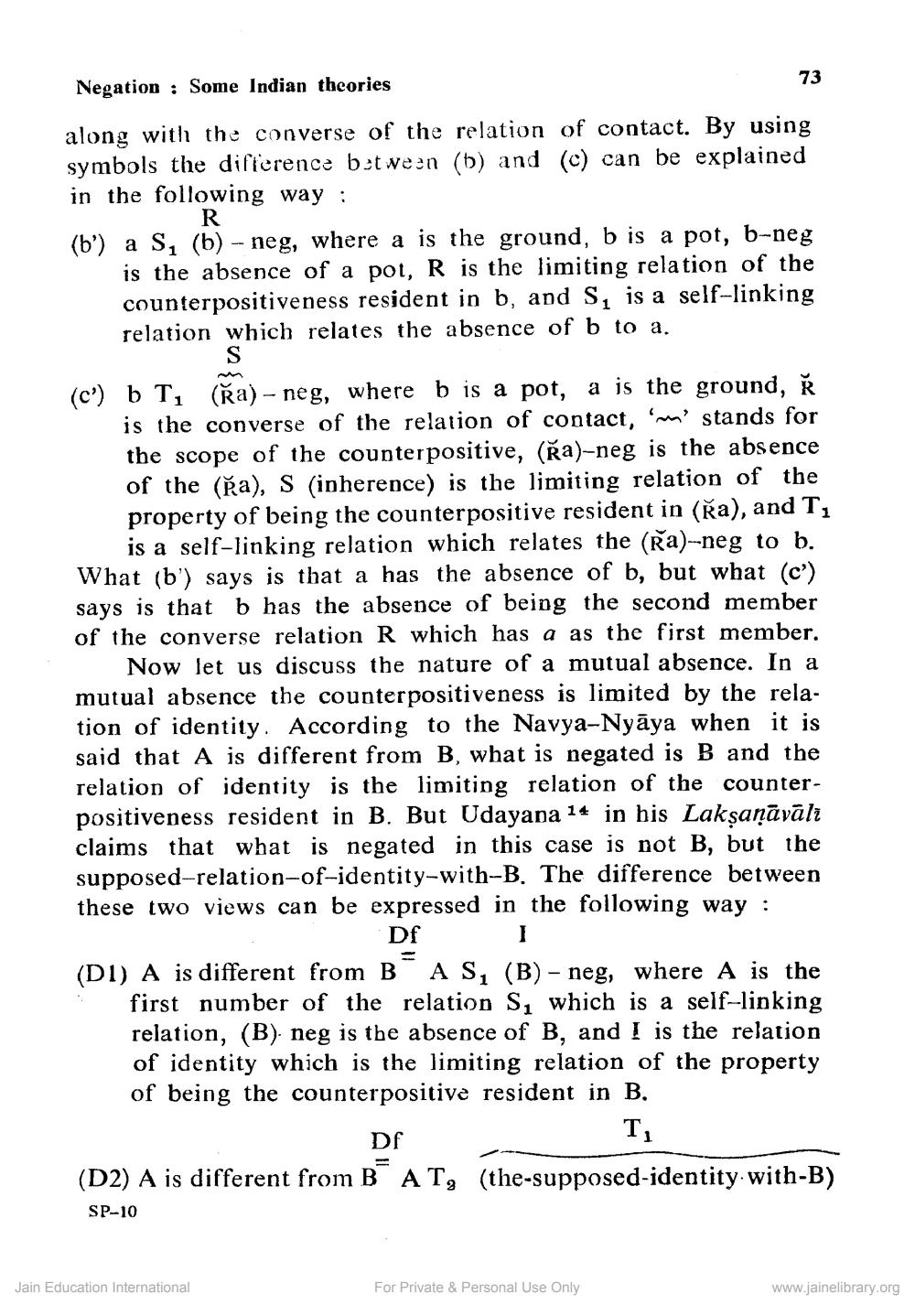________________
Negation : Some Indian theories
73
R
along with the converse of the relation of contact. By using symbols the difterence between (b) and (c) can be explained in the following way : (b) a S, (b) - neg, where a is the ground, b is a pot, b-neg
is the absence of a pot, R is the limiting relation of the counterpositiveness resident in b, and S, is a self-linking relation which relates the absence of b to a.
(c) b T (Řa) - neg, where b is a pot, a is the ground, Ř
is the converse of the relation of contact, may stands for the scope of the counterpositive, (Řa)-neg is the absence of the (ra), S (inherence) is the limiting relation of the property of being the counterpositive resident in (ra), and T,
is a self-linking relation which relates the (ra)-neg to b. What (b') says is that a has the absence of b, but what (c') says is that b has the absence of being the second member of the converse relation Rwhich has a as the first member.
Now let us discuss the nature of a mutual absence. In a mutual absence the counterpositiveness is limited by the relation of identity. According to the Navya-Nyāya when it is said that A is different from B, what is negated is B and the relation of identity is the limiting relation of the counterpositiveness resident in B. But Udayana 14 in bis Laksaņāvāli claims that what is negated in this case is not B, but the supposed-relation-of-identity-with-B. The difference between these two views can be expressed in the following way :
DE I (DI) A is different from B AS, (B) - neg, where A is the
first number of the relation S, which is a self-linking relation, (B) neg is the absence of B, and I is the relation of identity which is the limiting relation of the property of being the counterpositive resident in B.
I,
DE (D2) A is different from B AT, (the-supposed-identity.with-B) SP-10
Jain Education International
For Private & Personal Use Only
www.jainelibrary.org




